Comics Corner – Did DC just make Green Lantern Alan Scott bi?
This wasn’t the plan for this week’s Comics Corner. In the last two weeks, we’ve already explored the queer identities of Green Lanterns in Far Sector, and the lack of bisexual representation in superhero comics through the lens of Iceman in X-Men. Those topics were done for a while. Then, with this week’s Green Lantern 80th Anniversary Special DC lobbed a curveball that touched on both of those areas at once, and warranted immediate examination – the publisher may have just made Alan Scott, the original Green Lantern, bisexual.
Strap yourselves in though – to explain this one, we’re going to have to take a deep dive into the messy waters of continuity and reboots. Actually, scratch that: to describe DC’s continuity as “messy” is to do a disservice to clutter as a concept. As a publisher, DC has had more line-wide revisions of its timeline, events, characters, and milestones than any other, and Alan Scott has been impacted by them multiple times over the decades.
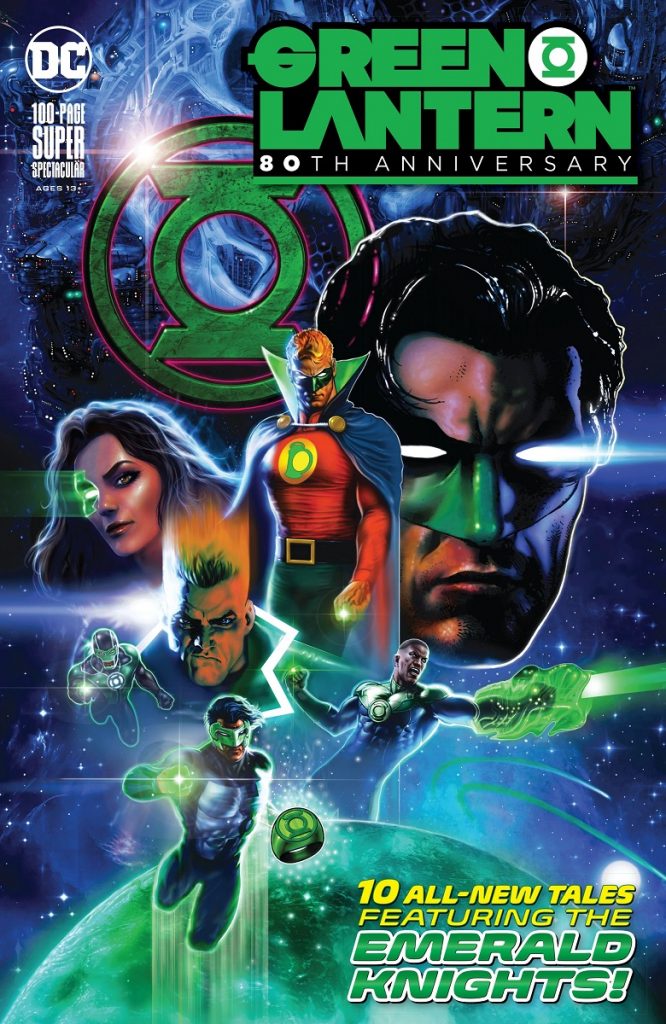
We touched on Alan’s origins in the Far Sector instalment – debuting in All-American Comics #16 in 1940, the creation of Martin Nodell, he was the first superhero to use the name Green Lantern, wielding a magic ring capable of making his thoughts into reality. However, after the psychiatrist Frederic Wertham published his book Seduction of the Innocent in 1954 – a screed against comic books as a medium, which lead to the near-death of the American industry – almost all superheroes from the “Golden Age” disappeared from publication.
While the idea of Green Lantern would be revamped in the 1960s with a new character, Hal Jordan, under the mask – following the reinvention of The Flash, which marked the dawning of comics’ Silver Age – Alan himself wouldn’t appear between 1951’s All-Star Comics #57 and 1963’s Justice League of America #21. That latter issue established Alan and his contemporaries in the Justice Society of America as having continued to age in “real time” on what was dubbed Earth-Two.
To give the uninitiated an idea of how convoluted DC’s multiple worlds can get, this wasn’t even the only “Earth-Two” that readers would encounter over the years that followed. There would also be Earth 2, Earth-2 – note the hyphen – and a different Earth-2 that was in an antimatter universe. On the “main” Earth 2, Alan would unknowingly father two children with the villainous Thorn, then later marry his former enemy, The Harlequin. Those children would grow up to be the heroes Jade and Obsidian, each inheriting aspects of Alan’s power. Incidentally, Obsidian would later be revealed as gay.
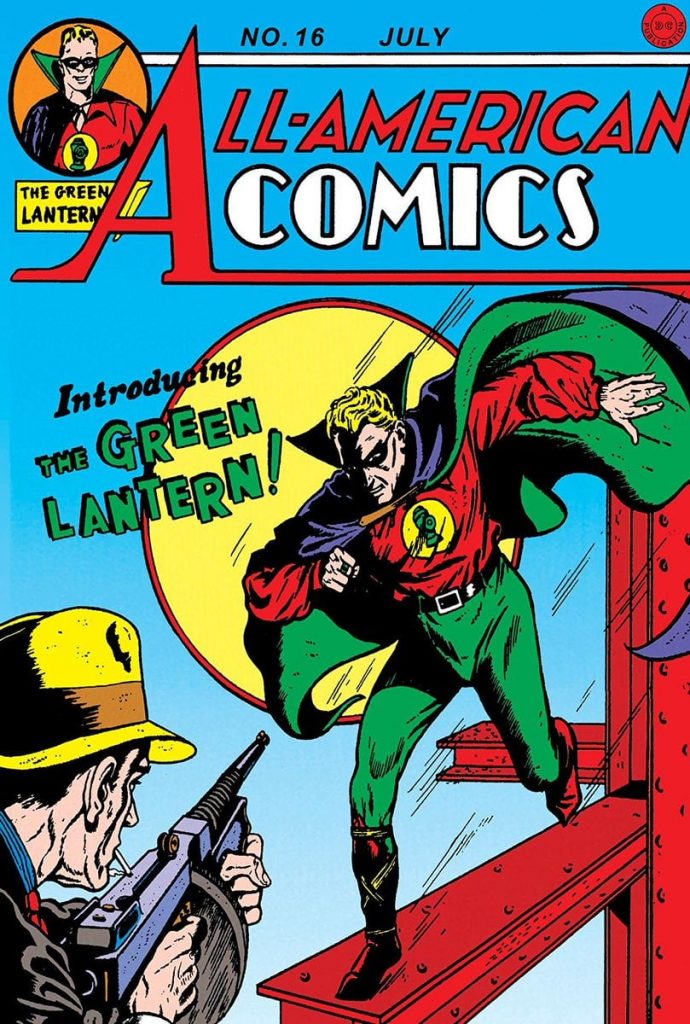
Following the 1986 storyline Crisis on Infinite Earths – which, short version, collapsed all of DC’s myriad alternate continuities into one – Alan, Jade, and Obsidian all existed on the same Earth as the Justice League, with the Justice Society having been formed during World War II. In order to keep the JSA heroes still viable when many of them would be pushing 70, various storylines established that they were either frozen in time, catapulted to their future, or – strangest of all – trapped in a pocket dimension fighting Ragnarok on loop until they were freed in the present day, unaged.
I promise, this will all start to get gayer, soon.
Fast forward to 2011, and alternate Earths were back en vogue at DC – the Flashpoint storyline splintered comic book reality once more and re-wrote history, with only five years now having passed in the ‘main’ DC timeline since Superman had made his public debut. This lead to a line-wide publishing revamp dubbed the New 52, consisting of 52 new ongoing titles that gave as much prominence to niche characters such as Voodoo or OMAC as it did to Batman and the Justice League. However, the truncated timeline left no room for WW2-era heroes, so the former Justice Society characters were re-imagined as present day figures, but once again on an alternate Earth.
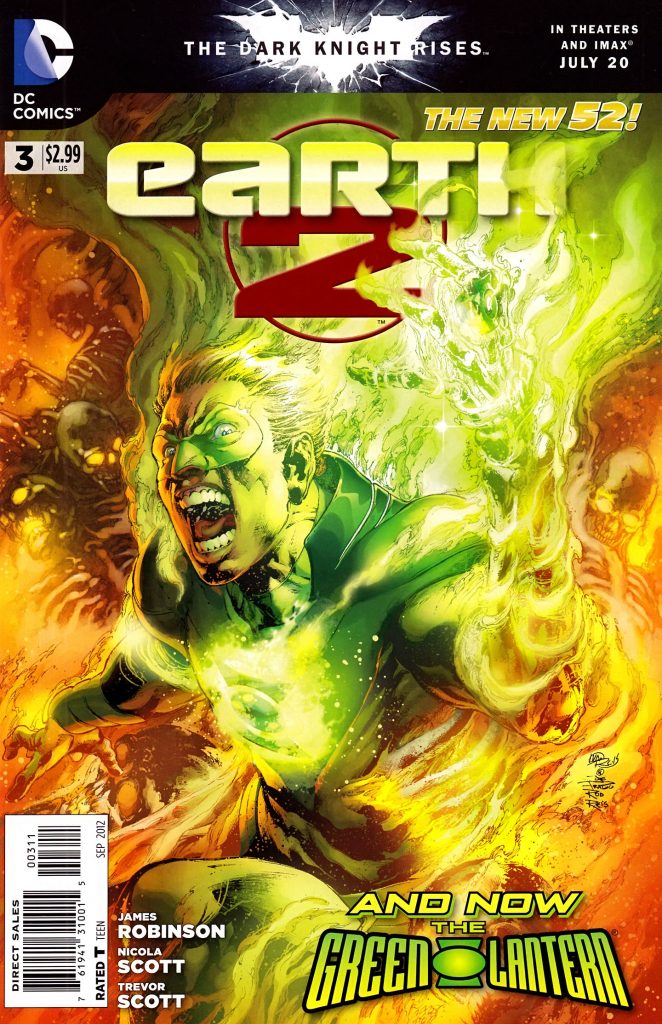
In this title, fittingly titled Earth 2, Alan was once more the only Green Lantern, but was also reimagined as an openly gay man. His origin was revamped, gaining his powers from “The Green”, the spirit of the Earth itself, after surviving a train crash that killed his fianceé Sam Zhao. In a poignant moment, this version of Alan makes his engagement ring the focal totem for his power.
Rebooting the original Green Lantern as gay attracted media attention at the time, and proved to be more than just an attention grabbing headline. Alan’s doomed romance with Sam was pivotal to his development in the Earth 2 series, although he eventually gained some closure following his loss.
Earth 2 would, under various titles, run from 2012-2017, with Alan a regular character throughout. However, back in the main DC Universe – the one where the Justice League lived – the Justice Society characters, including the original version of Alan, were still nowhere to be seen. Until recently.
With the New 52 as a whole have been an early sales success but increasingly unpopular both critically and with readers, elements of the “original” timeline were starting to filter back through. Following a key one-shot issue, DC Universe Rebirth, DC started to once again massage its continuity, and characters erased by Flashpoint began cropping back up. This included an issue of Justice League where the present day Flash and Green Lantern are thrown back in time, meeting the original Alan and the Justice Society – even though they shouldn’t exist.
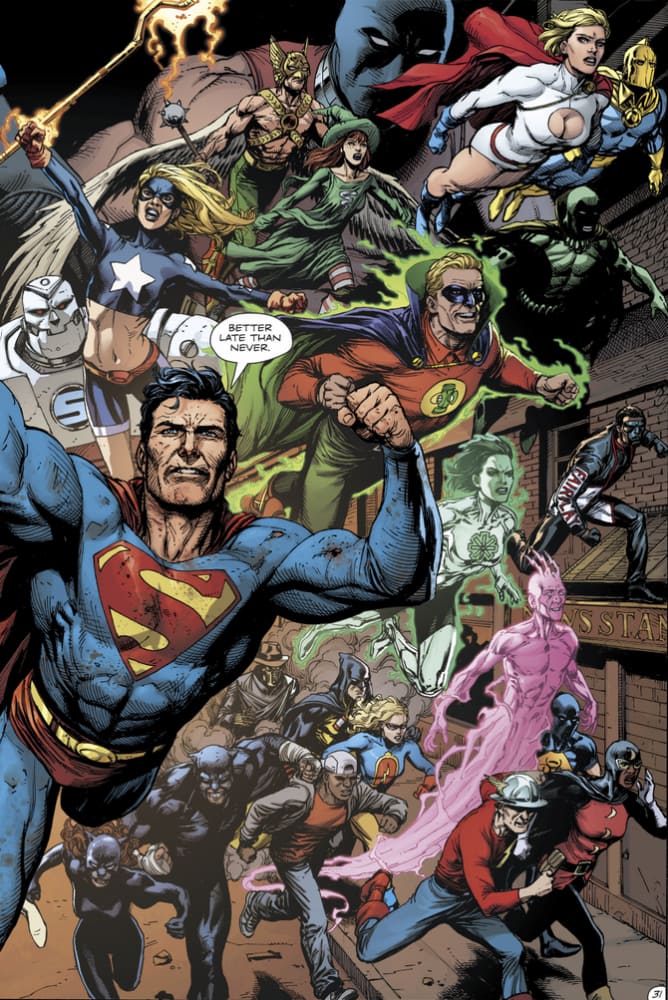
Most tellingly, the recently concluded Doomsday Clock – which crossed the DC Universe with the Watchmen characters – established that the god-like Doctor Manhattan was responsible for messing with time itself, and ultimately restored long-absent characters including Alan and his children Jade and Obsidian to the timeline.
Neither the gay Earth 2 version of Alan nor the original straight-with-kids version has appeared since – until, finally, this week’s Green Lantern 80th Anniversary Special. In an eight-page story called “Dark Things Cannot Stand The Light”, written by James Tynion IV and drawn by Gary Frank, we meet Alan shortly after gaining his powers, as he visits a woman to discuss her late son. What follows serves as a recap and slight tweaking of Alan’s original 1940 origin, keeping the period setting but giving it a queer twist.
The woman’s son, Jimmy Henton, died in the crash, but not before pointing Alan to the magical lantern that gifts him his powers. Alan talks with Jimmy’s mother, Doris, about why he was on the train in the first place, about how he was “trying to get away… from myself”. A silhouette of Alan and Jimmy is shown, the burning of the train’s furnace smouldering pointedly between them. Finally, Doris talks about how Jimmy had felt as though he had “a light” inside him, one he had to keep hidden even if it burned him up from the inside.

It is, of course, all very specifically coded language for talking about same-sex desire, which was not only highly taboo in the America of the 1940s but outright illegal. By necessity, many stayed closeted. Yet the short story also clearly establishes that this take on Alan had those same feelings, and was close to Jimmy. This revamp essentially merges the original origin of Alan with the openly gay version of the character from Earth 2, swapping the Chinese Sam Zhao for the American Jimmy – who was present all the way back in All-American Comics #16 – in the process.
DC could simply be making the “main” Alan Scott gay now, echoing the 2012 revamp. Presuming we’re not looking at yet another version of the character here though, it’s perhaps more arguable that DC is laying the groundwork to establish him as either bisexual, or at least to have lived a closeted life long enough to father Jade and Obsidian.
There’s one point that inclines towards the former interpretation though – Tynion is one of relatively few openly bisexual writers in mainstream comics. He’s also one of DC’s most prominent creators, recently taking over the core Batman title. Having him pen Alan Scott’s first solo story in years seems poetic at the very least, but hopefully points to having a bi creator on board to shape a bi character.
However, it’s all rather unclear where the story fits, or when readers will see Alan next, and matters are complicated by Doomsday Clock bringing back Alan with his kids. DC’s continuity is still in flux though – a planned revamp codenamed “5G”, which was to focus on a new generation of heroes taking on classic mantles, appears to have been cancelled before release, and the events of Doomsday Clock are yet to be reflected in the regular monthly titles. Throw in production hurdles created by the COVID-19 pandemic leading to altered publication plans and DC may just decide it all happened, somewhat wearyingly, on yet another Earth.
There’s still much to be told of the possibly-revamped Alan Scott, and while making him gay in the core continuity would still be a major step for representation, making him bisexual would be a stronger creative decision. It would give mainstream comics something it’s never seen before – a veteran, powerhouse, bisexual superhero, with kids.


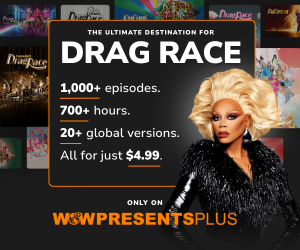





Best and most informing article I’ve read on this story, Matt. Shared with some friends since you did an excellent job with the character’s whole backstory/history.